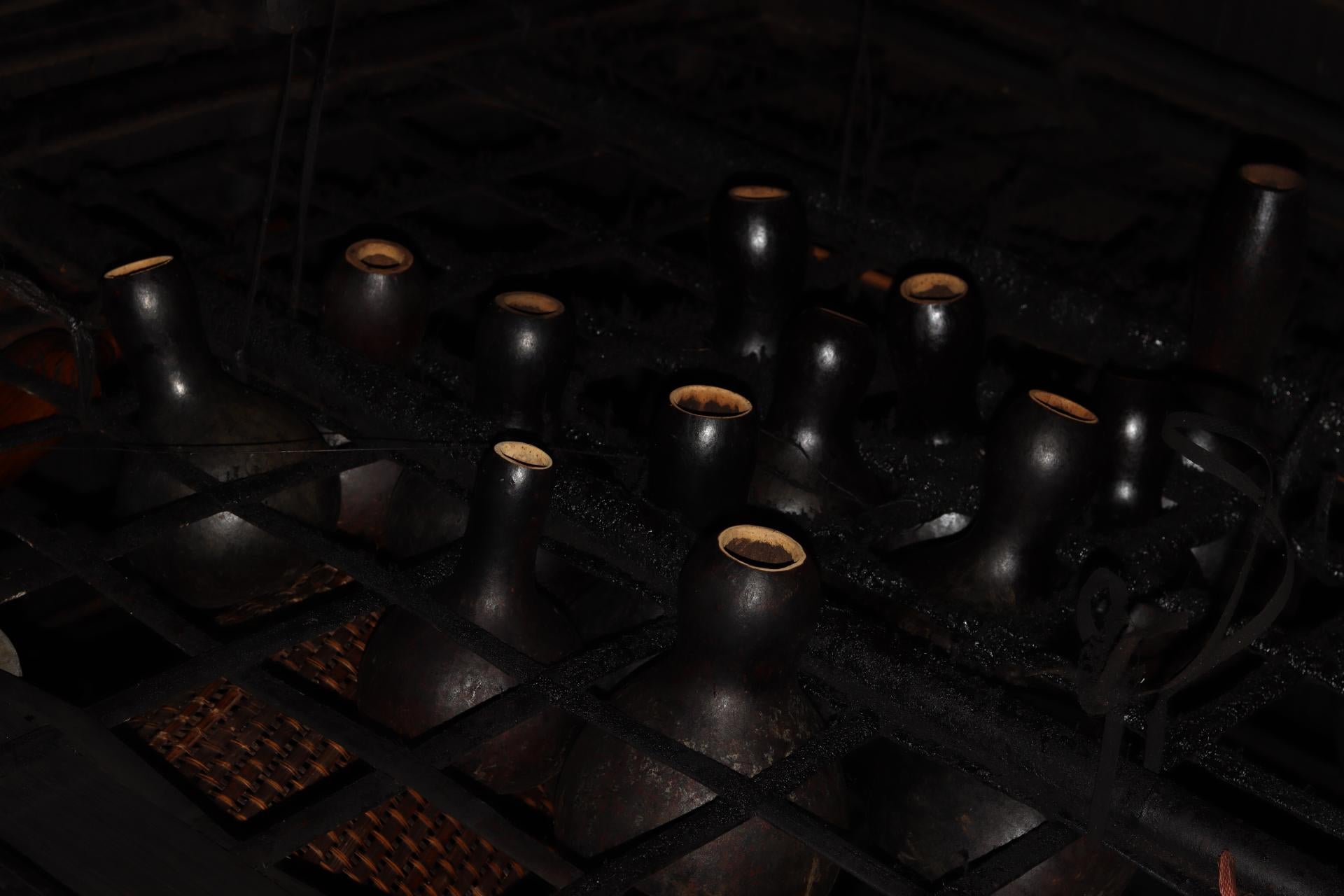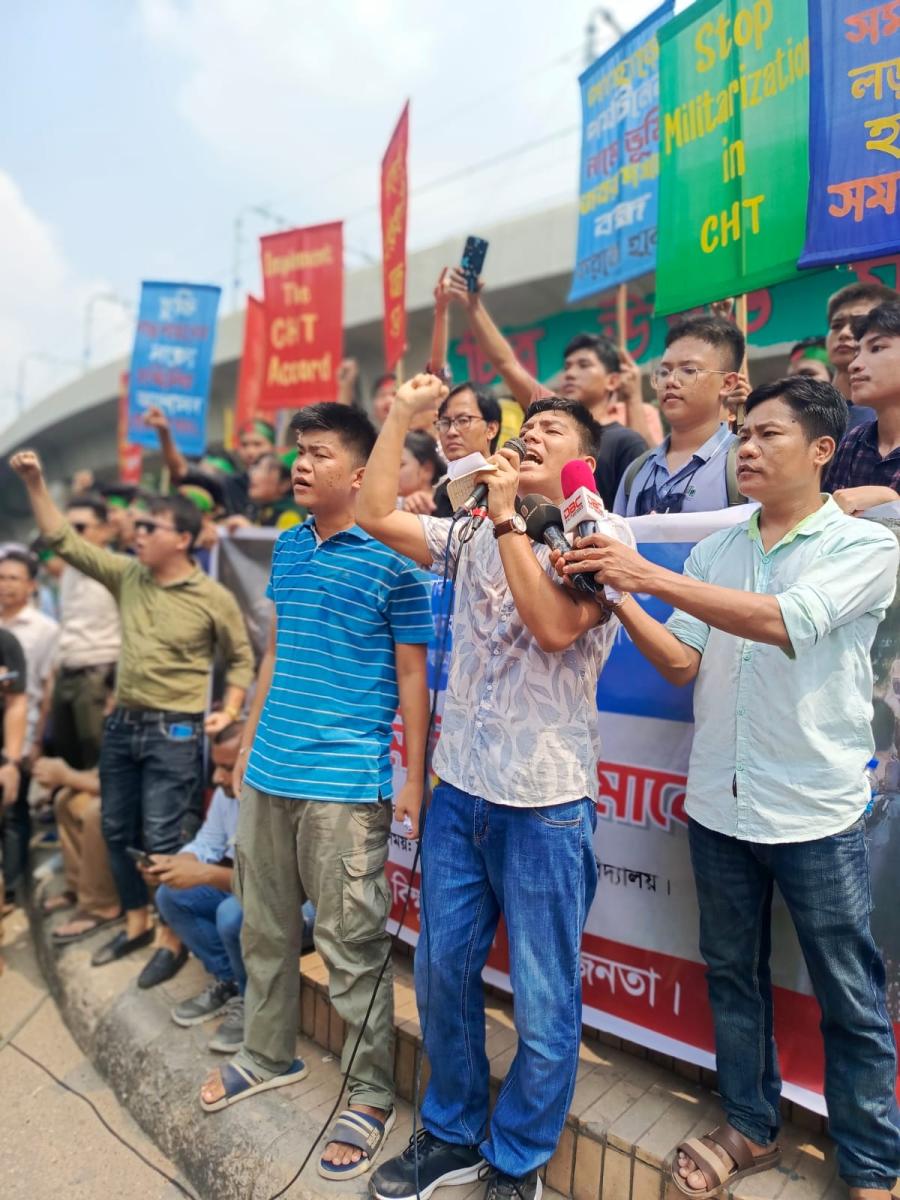Donoai Mro (Mro) is an advocate for Indigenous rights, environmental conservation, and sustainable development. A proud member of the Mro Indigenous community in the Bandarban Hill district of the Chittagong Hill Tracts of Bangladesh, he was born into a farming family, fostering a deep connection to nature and traditional practices. He recently earned a degree in Criminology from the University of Dhaka, specializing in environmental crime. As a rising youth leader, Mro serves as the Information and Publication Secretary of the Bangladesh Mro Student Association, where he works to empower Indigenous youth and strengthen Mro culture.
Mro is passionate about knowledge-sharing, actively engaging with his community and broader society to amplify Indigenous voices and advocate for their rights. He is committed to shedding light on the overlooked histories of Indigenous communities that have been marginalized by limited education and representation, and he considers it his responsibility to change that narrative. He is also engaged in addressing the water crisis in the Chimbuk Hills by blending Traditional Knowledge with modern advocacy. Through his Cultural Survival Youth Fellowship project, Mro is bridging generational gaps, fostering community-led solutions, and strengthening resilience in the face of environmental and political challenges. His work continues to drive awareness, policy advocacy, and grassroots activism, ensuring the protection of his Peoples’ heritage and resources.
The majority of the Mro population lives along the borders of Bangladesh, Myanmar, and India. In Bangladesh, over 200 Mro villages are nestled within the tropical forests of the Chittagong Hill Tracts, and approximately 70,000 Mro people live along the Bangladesh-India border with Myanmar. The Mro People are deeply influenced by their traditions, culture, and beliefs, which shape their way of life and social structures. They are highly skilled in farming and the sustainable use of natural resources, maintaining a way of life that reflects their strong connection to their ancestral heritage. They also face numerous challenges in protecting their unique heritage and resources, which are exacerbated by climate change and socio-economic pressures. To address these challenges, Mro designed and carried out “Tui’piya,” an initiative to empower his community with the knowledge, skills, and resources needed to effectively prevent and respond to climate change-induced disasters, focusing on water scarcity in the Chimbuk Hills.
The Tui’piya project aimed to bridge generational knowledge gaps by connecting Elders and youth in knowledge-sharing sessions emphasizing the importance of traditional water collection techniques, which many young people in the community were unaware of, and advocating for a return to the community’s historical practice of reusing plastic bottles to minimize waste. The project also trained several community members, including youth, women, and Elders, to lead advocacy efforts and continue promoting sustainable water conservation practices. While traditional practices offer a holistic approach to sustainability, factors such as climate change pose new challenges. Mro’s project identified both the strengths and limitations of traditional methods, stressing the need for adaptation while strengthening Indigenous Knowledge.
“The Tui’piya Project was a community-centered initiative with support from Cultural Survival to address water scarcity in the Chimbuk Hills. We began by studying the current and historical status of water sources to understand the impacts of climate change and human activities such as deforestation and unplanned tourism. A seven-member committee was formed to facilitate the dissemination of Traditional Knowledge and coordinate efforts to preserve natural water sources and community forests. This committee collaborated with villagers and external stakeholders to protect critical resources and implement sustainable practices,” Mro explains.
One of the project’s key activities was advocacy meetings connecting community representatives with local nonprofit organizations and regional government agencies. These meetings fostered collaboration and resource sharing, ensuring the long-term resilience of the community. In addition, community-led campaigns were launched to restore traditional practices, such as treating water sources as sacred and fostering a sense of collective ownership.
Bangladesh is home to more than 50 Indigenous communities, which comprise 1.8% of the total population. A significant concentration of these communities is found in the remote areas of the Chittagong Hill Tracts. Reports indicate that Indigenous communities are more vulnerable to extreme weather events compared to non-Indigenous groups, as many reside in climate-sensitive areas and rely heavily on natural resources for their survival. Additionally, Indigenous communities often face social exclusion, and their limited access to basic rights makes them even more susceptible to climate-induced disasters. These adverse conditions exacerbate their socio-economic challenges, impacting their livelihoods and health and threatening their traditional practices and cultural activities. For millennia, Indigenous communities have adapted to such extreme conditions by developing various nature-based adaptation measures.
Bangladesh is frequently affected by natural disasters such as floods, droughts, and landslides. While floods are prevalent in low-lying areas, the Mro community, living in the hilly regions, are most affected by droughts and landslides. “These disasters disrupt our traditional practices, such as jhum (a method of cultivation), which depends heavily on balanced environmental conditions. Droughts caused by climate change dry up natural streams, forcing community members to travel long distances in search of water. Landslides, often triggered by heavy monsoon rains, pose additional risks to lives and livelihoods. Such disruptions lead to food and water shortages affecting every aspect of our socio-economic lives,” Mro says.
Indigenous communities in Bangladesh face unique challenges in preparing for and recovering from natural disasters. Among the most formidable are geography, communication, and the historic and systemic marginalization of Indigenous communities. Language barriers and vulnerable infrastructure that is easily damaged and the limited access to critical disaster relief and recovery resources for marginalized communities, combined with exclusionary policies and government initiatives that are typically designed from the perspective of mainstream populations and ignore the specific needs of Indigenous groups, limit timely disaster response and recovery efforts and reduce opportunities for Indigenous representation and advocacy in disaster planning and policymaking.

Through Mro’s Fellowship project, the Mro community has made significant strides in disaster resilience. Advocacy meetings have enabled the community to secure support from local institutions, including logistical support and equipment for water conservation. The preservation of community forests has also proven effective in maintaining natural streams during the dry season. By proactively monitoring and responding to water shortages, the community has reduced the severity of the annual water crisis with Indigenous knowledge and local practices forming the backbone of their disaster response.
“Traditional beliefs, such as viewing water sources as sacred, promote sustainable resource management,” Mro says. “However, modern development and tourism have eroded these practices. To counter this, the project has focused on reviving traditional values and connecting the community with external stakeholders to strengthen their efforts. Youth engagement has been a key focus, bridging generational gaps and ensuring the continuation of Traditional Knowledge.”
Mro says that government agencies and international partners must play a more active role in supporting Indigenous communities affected by natural disasters, such as developing inclusive plans that involve local leaders, youth, and women, providing translators to overcome communication barriers during emergencies, and offering legal support to help Indigenous communities navigate complex administrative processes. They must also ensure equitable access to resources such as food, medical care, and emergency shelter, and create platforms for Indigenous communities to share their disaster management experiences and practices.
Mro points out that global Indigenous leaders and communities around the world face similar challenges of marginalization and environmental vulnerability. “To address these issues, it is critical to ensure proportional representation at the national and international levels. By working together, we can amplify our voices and develop sustainable solutions to protect our communities from natural disasters. Let us honor our Traditional Knowledge and practices while working with external partners to ensure a resilient future for all.”
Since 2018, Cultural Survival has awarded 137 fellowships supporting 305 youth fellows.


